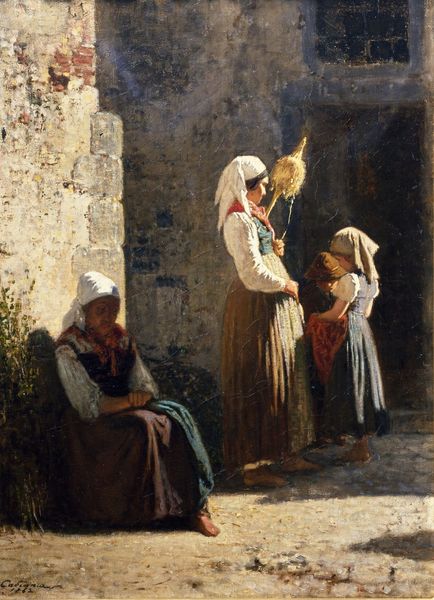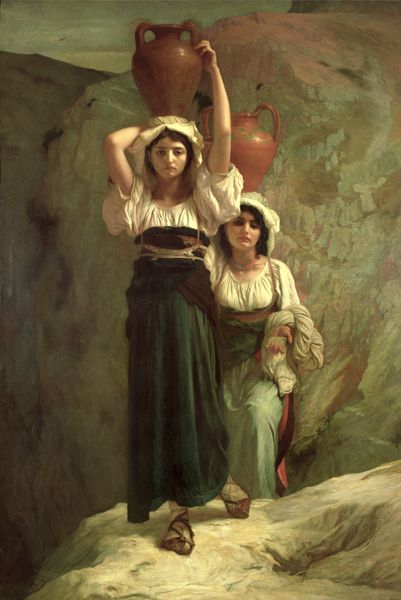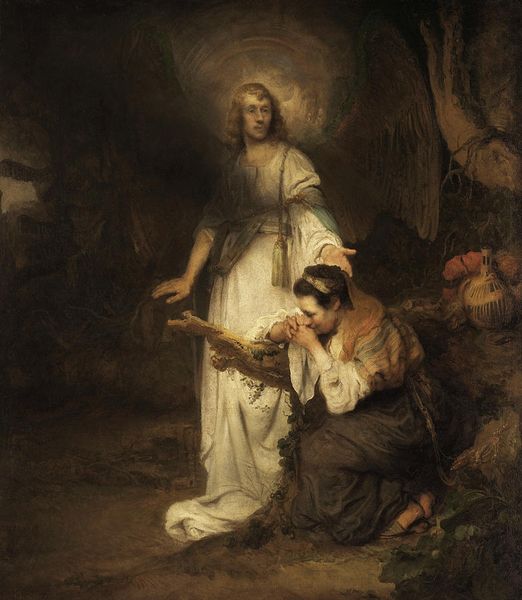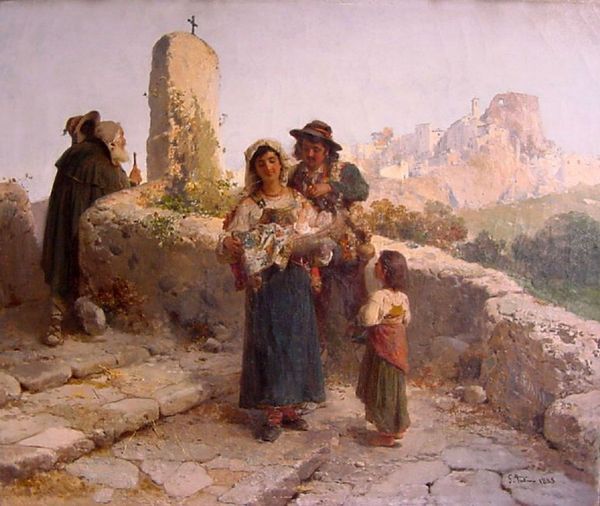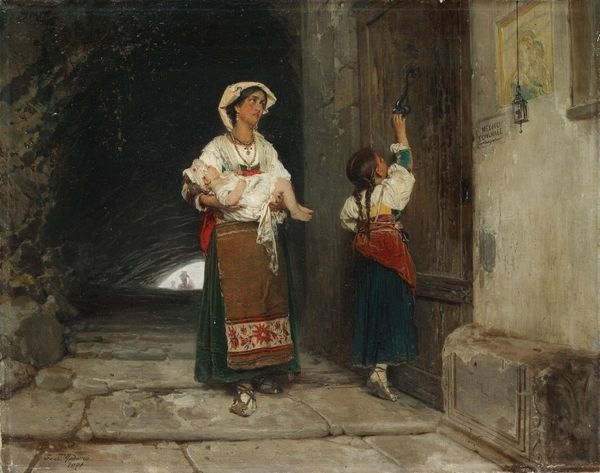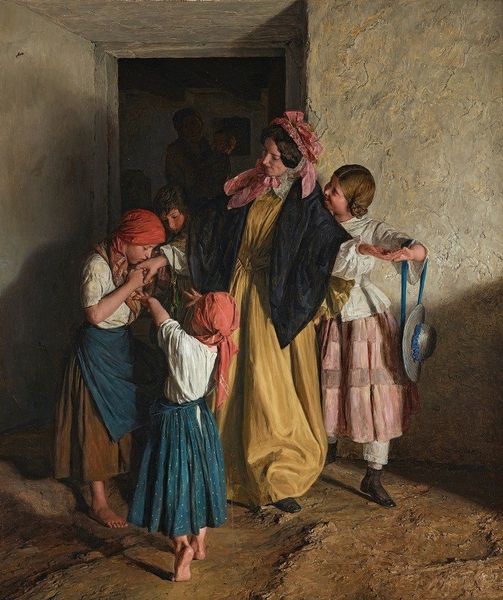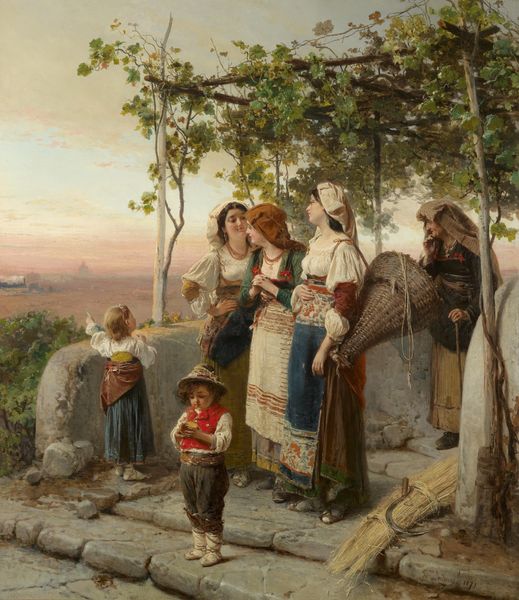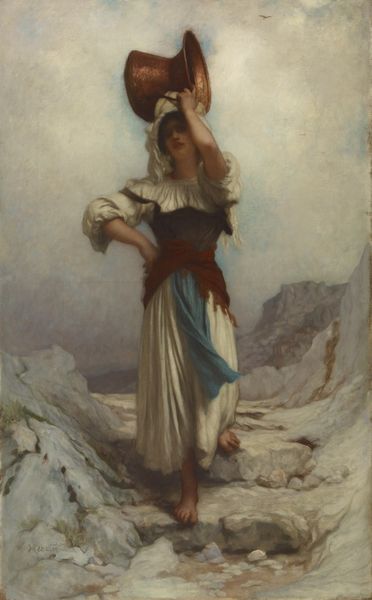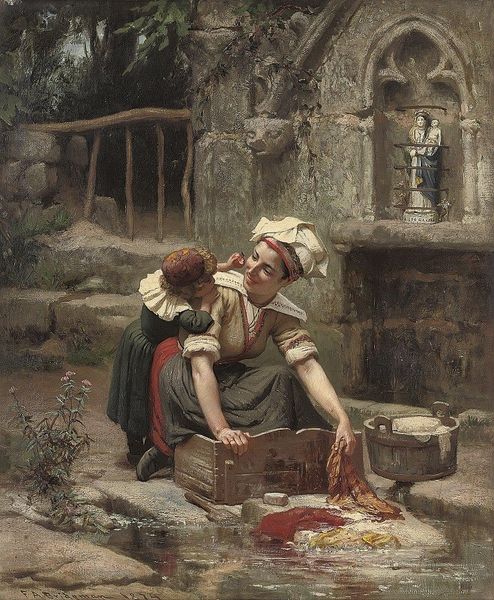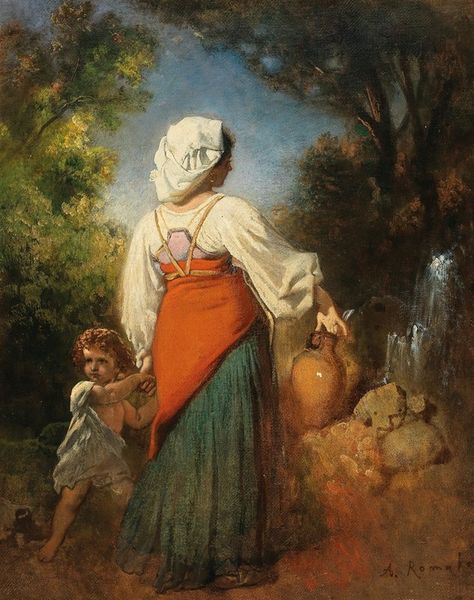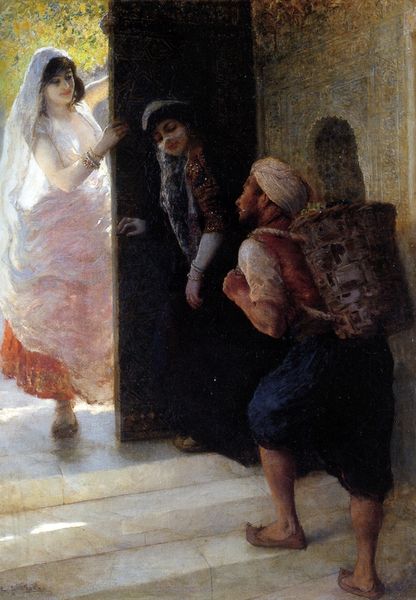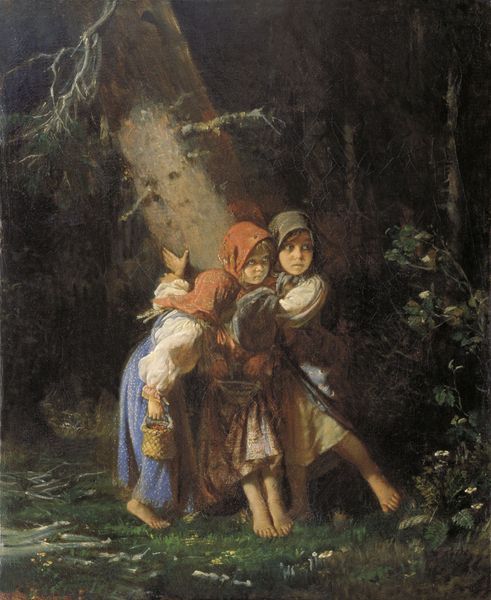
painting, oil-paint
#
portrait
#
gouache
#
narrative-art
#
painting
#
oil-paint
#
figuration
#
oil painting
#
underpainting
#
costume
#
painting painterly
#
genre-painting
#
history-painting
#
academic-art
#
realism
Dimensions: 176 x 288 cm
Copyright: Public domain
Editor: So, here we have Ernest Hébert's "The Cervarole (the women of Cervara, Roman states)," an 1859 oil painting. There’s a kind of burdened weariness in the central figure's expression, and in the upward climb they all seem to be making. What do you make of this work? Curator: I see this not merely as a genre painting but as a powerful statement about labor, gender, and the representation of rural women in 19th-century Europe. Consider the historical context: Italy was on the cusp of unification, and representations of regional identities were potent. Editor: How so? Curator: Hébert's choice of Cervara women, known for their distinctive dress and arduous work carrying water, brings the realities of their existence to the forefront. These aren’t romanticized peasants; their postures suggest both resilience and the weight of societal expectations. How does that strike you? Editor: I didn’t really pick up on any political themes at first glance, it's just a snapshot of everyday life in that era, right? Curator: On the surface, perhaps. But think about whose stories get told, and how. By focusing on these women, Hébert is implicitly acknowledging their contribution to the social and economic fabric. It raises questions about visibility, and about who is deemed worthy of artistic representation. The realism of their bare feet against the stone steps, the weight they carry... Editor: It does make you wonder about the daily realities that weren't usually depicted in such a direct way. I guess I was mostly thinking about the aesthetic qualities of the art, but I see your point about what it could say about women's labor back then. Curator: Exactly! This is where art history and social context intersect. The visual becomes a vehicle for a much deeper dialogue, a dialogue about power, representation, and the lives of women whose stories often go untold. It's a useful case in questioning the conventional narratives, don't you think?
Comments
No comments
Be the first to comment and join the conversation on the ultimate creative platform.
